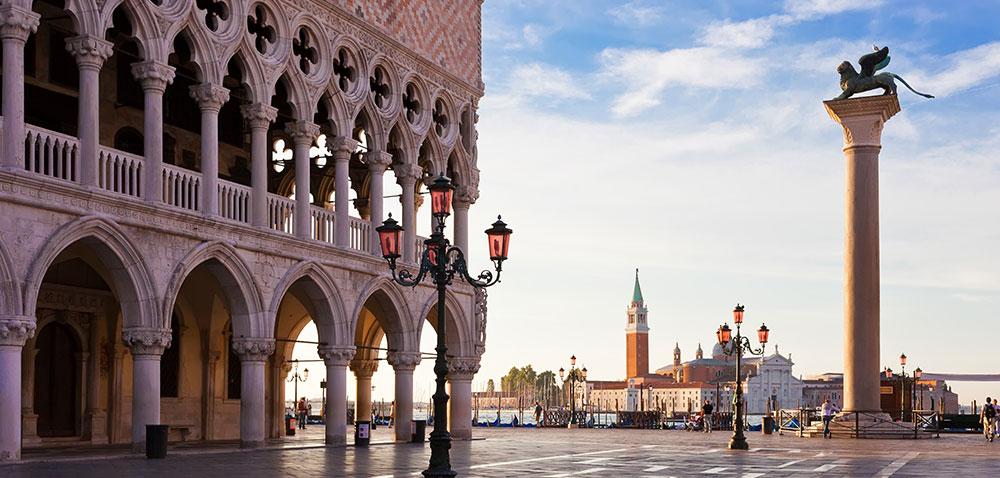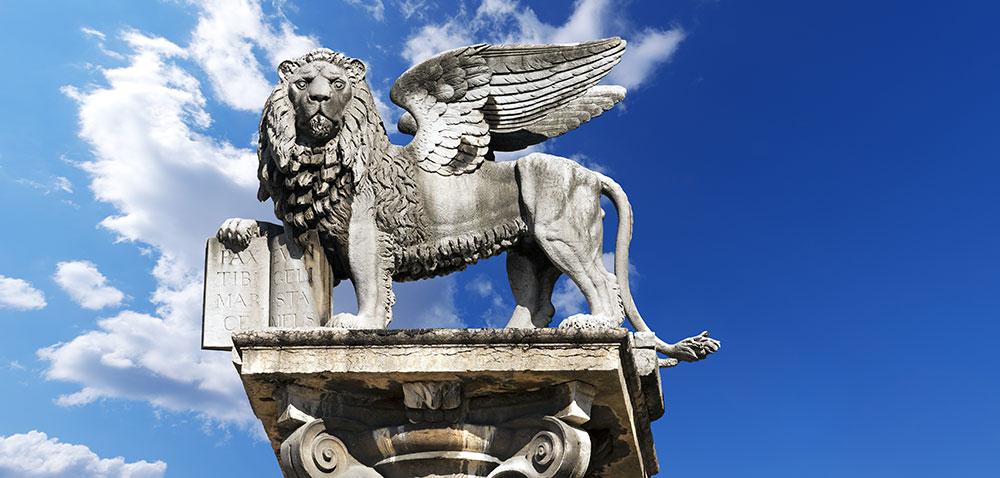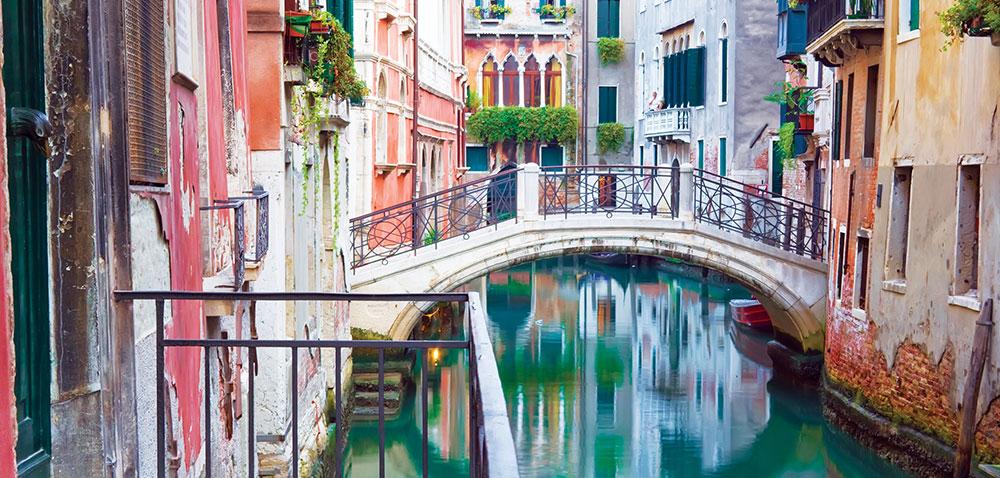The pride of Venice
While one of the world’s most romantic cities may conjure many iconic images, there’s more to Venice than gondolas, waterways and carnival. Scratch beneath the surface and you’ll find some intriguing stories and traditions that will float past many visitors un-discovered.
The symbol of the city is a winged lion, with a book beneath its claw. Look closely and you’ll spot 13 of them in St Mark’s square alone. A religious motif, most of the originals were destroyed by Napoleon’s army in the late 18th Century, meaning you’ll sadly have to make do with replicas.
The bridges tell a tale too. Many of the 417 bridges uniting the city were once used to divide. The population of Venice used to be broken into two factions, the east, made up of industrial workers, and the west, mostly fisherman. The sides hated each other and would often meet on the bridges to fight in what became known as ‘fist wars’. When finally outlawed, these rivalries took a more friendly form at carnival-time with ‘forze d’ercole’ – human pyramid building. The side that builds the highest human pyramid wins.
And then there’s Casanova. Alive at the time Venice was known as the ‘Pleasure Capital of Europe’, his popularity and high-standing got him into all the best parties and official events, where he built a reputation as a somewhat philanderer and womanizer. Hanging out with such luminaries as Mozart, Voltaire and Goethe, he led an extraordinary life and in putting it to paper in his autobiography, painted one of the most interesting portraits of historic Venetian life. So if you’re interested in unearthing what Venice is really made of, maybe you should bin the tour guide and pick up his Histoire de ma Vie instead.
And then there’s Casanova. Alive at the time Venice was known as the ‘Pleasure Capital of Europe’, his popularity and high-standing got him into all the best parties and official events, where he built a reputation as a somewhat philanderer and womanizer. Hanging out with such luminaries as Mozart, Voltaire and Goethe, he led an extraordinary life and in putting it to paper in his autobiography, painted one of the most interesting portraits of historic Venetian life. So if you’re interested in unearthing what Venice is really made of, maybe you should bin the tour guide and pick up his Histoire de ma Vie instead.



